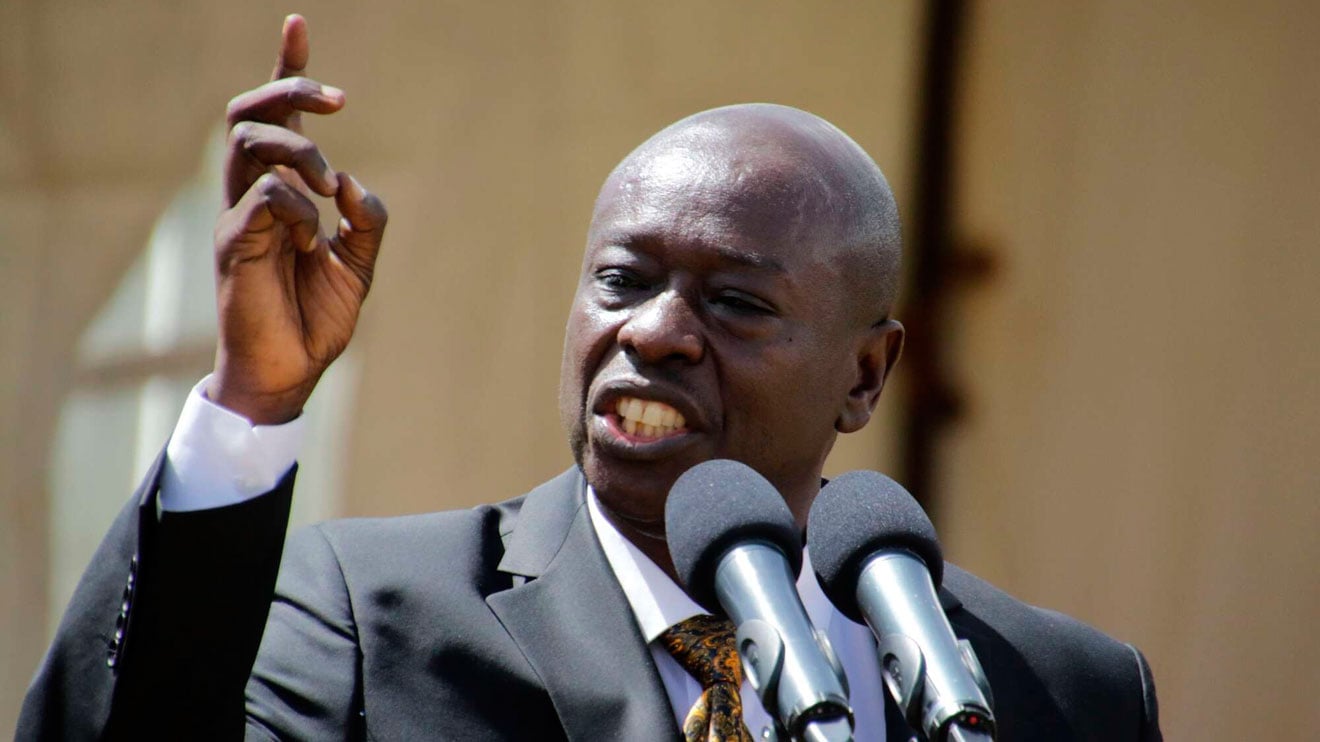Queries as Uganda embarks on developing 2nd satellite

Dr Monica Musenero, the minister for Science, Technology and Innovation, speaks at the launch of the upcoming National Science Week 2023 in Kampala on Wednesday. PHOTO/ISAAC KASAMANI
What you need to know:
Many Ugandans wonder how the country benefitted from the first satellite and the money spent on the project.
The Science, Technology and Innovation Secretariat in the Office of the President has said its scientists have embarked on another ambitious venture of developing a second, more sophisticated satellite.
The multi-billion space programme, which has been criticised by a section of the public and legislators on priority grounds, comes amid unanswered questions on how the country benefited from the first satellite and the money spent on the project.
Dr Cosmas Mwikirize, the superintendent for industrial value chain development at the secretariat, in an interview on Wednesday, indicated that the country’s first satellite, PearlAfricaSat-1, “was [a] student-developed satellite, with very limited capacity but to help us showcase that we can do it.”
He also revealed that it had a short lifespan of around 12 months, meaning the satellite would reach the end of life somewhere in 40 days.
This is contrary to the capabilities the secretariat listed and the expectations they raised when the satellite was launched on November 7 last year by America’s National Aeronautics and Space Administration (NASA).
Dr Doreen Agaba, the government’s head of space science, said last November that the satellite would take images of different categories which would support farmers, infrastructure development and mineral mapping.
Justification
However, on Wednesday, while announcing the upcoming National Science Week 2023 due to start November 6, Dr Mwikirize said: “In the grand scheme of things, it was never expected to have a lot of capacity as a nation.”
“But also, since we have those engineers [that can build the satellite] here, they are also leading the efforts towards developing the next satellite. The second satellite is being built in Uganda in collaboration with our partners from Egypt,” he added.
Dr Monica Musenero, the minister for Science, Technology and Innovation, said: “We have some information, which it captured. So our focus now is to build the second satellite and improve our capacity at Mpoma so that we can get more information. Second satellite should give us communication capacity like digital satellite television.”
According to information from the satellite developers and the secretariat, PearlAfricaSat-1 was a cube satellite size 1U, the smallest satellite. The exact cost of development has not been revealed by the secretariat and the three engineers who developed it.
However, available information indicates that the government has already spent at least Shs7 billion on the programme. The government intends to spend a total of Shs104.5 billion to develop, launch and operationalise two satellites, according to a draft budget for the national Innovation, Technology Development and Transfer Programme Implementation Action Plan for 2020 to 2025.
The satellite development, according to an internet search by this newspaper, costs somewhere between $500,000 (Shs2b) to $400m (Shs1.5 trillion), depending on size and what it can do.
Dr Musenero, when asked about the likely cost involved in developing the first and what would be required for the second satellite, said: “Why are Ugandans worried about costs?”
“You think that because it is going to cost us a lot to have a satellite, we should stay in peasantry? What we are developing is an approach that will benefit other sectors of the economy,” she said. However, Ms Joan Acom Alobo, the Soroti City Woman representative, who is also a member of the Parliament’s Committee on Science, Technology and Innovation, said the country should first deal with pressing issues affecting the population before such ventures.
“I am conflicted whenever it comes to things to do with space. I am aware there are pressing needs on the ground, such as finding the right technology to turn plastic waste into asphalt to pave our city roads,” she said.
“…. Only when we create good roads and manage plastic waste here on our hard Ugandan earth, shall we be able to look up to the sky without tripping and drowning in a mega pothole,” she added.
Resolution and component of satellite
The 1U satellite can carry less than half a kilogramme of hyperspectral cameras that can take high-resolution images on the ground, according to information from the secretariat. Mr Bonny Omara, one of the engineers that built PearlAfricaSat-1, said the resolution is “20 meters.”
According to information from UP42.com, a German company that deals in space data and analytics, “optical satellite imagery may be classified as: Low resolution: [is when it is] greater than 20 meters; Medium/ coarse resolution: [is when it is] greater than 2 meters or equal or less than 20 meters.”
“High resolution: [is when it is] greater than 50 centimeters or equal to or less than 2 meters; and very high resolution: [is when it is] equal to or less than 50 centimeters.”
Dr Mwikirize explained that: “within the cube satellite, you can go up to [size] 3U but here, you are still talking about low earth observation satellites.”
“We have started with the smallest that we could develop and we have developed capacity now and it is going to be a journey. We have about 18 people who are trained in the country. Our journey is on course,” he added.
Background
The Mpoma satellite station, according to available information, was established in 1978 during the reign of President Idi Amin with support of the Japanese government but he was expelled from power before it was completed. When President Milton Obote came to power, he carried on with the establishment of the station.
However, Dr Musenero said they have had to renovate the centre to improve the capacity, but she didn’t reveal the cost involved in renovating. “When we officially opened Mpoma, we were also procuring additional equipment,” she said. Dr Musenero said the other work involves collaborating with other countries or organisations with satellites.




